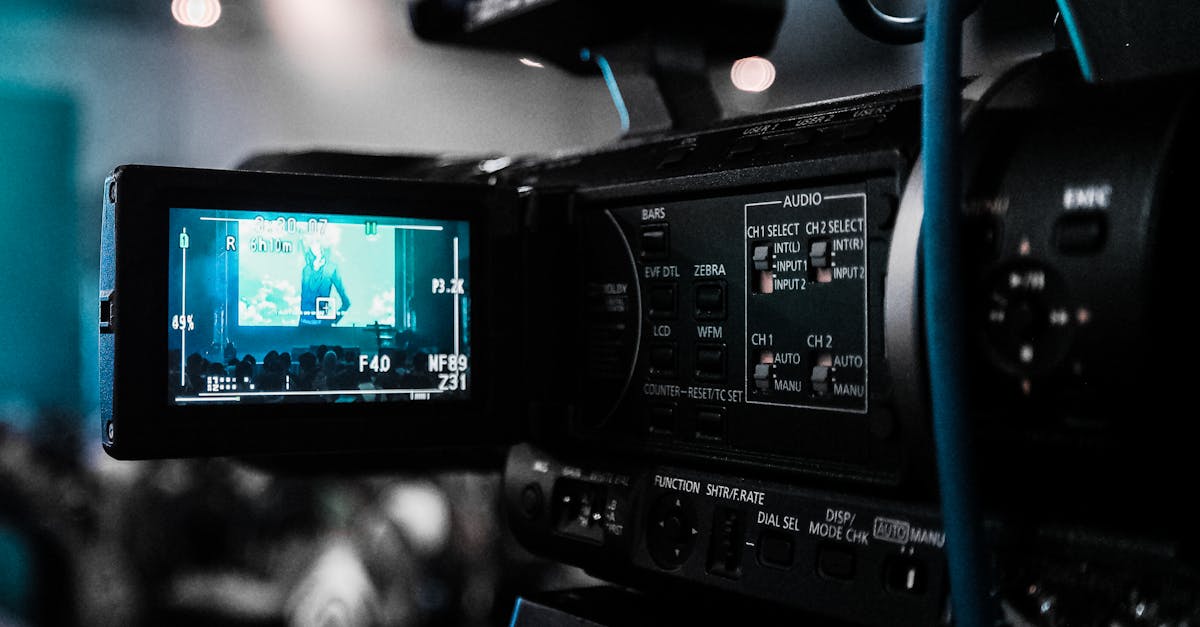
Table Of Contents
Evolution of OS and OC Abbreviations
The abbreviations OS and OC have been commonly used in scriptwriting for many years, each carrying its own unique significance. However, understanding the evolution of these abbreviations provides valuable insight into their usage and relevance in contemporary writing practices. Scriptwriting in Kitchener has witnessed a transformation in the way these abbreviations are employed, showcasing a shift towards more nuanced and refined storytelling techniques.
Historically, the abbreviations OS and OC have been integral components of scriptwriting conventions, serving as shorthand references for Off-Screen and Off-Camera respectively. Over time, their usage has expanded beyond their traditional definitions, adapting to the ever-changing landscape of the entertainment industry. Scriptwriting in Kitchener reflects this evolution, with writers incorporating OS and OC in innovative ways to enhance character development and narrative depth in their scripts.
Tracing the Historical Usage of OS and OC in Scriptwriting
Tracing the historical usage of OS and OC in scriptwriting provides valuable insights into the evolution of these abbreviations within the industry. Scriptwriting in Markham has witnessed a significant shift in the usage of OS (off-screen) and OC (off-camera) over the years, reflecting changes in cinematic styles and storytelling techniques.
In the early days of scriptwriting in Markham, the abbreviations OS and OC were predominantly used to indicate characters or sound coming from off-screen or off-camera. This simplistic approach gradually evolved to encompass a wider range of meanings and applications, allowing writers to convey nuances in direction, character dynamics, and even emotional subtext. As the narrative possibilities expanded, so did the creative utilization of OS and OC in scripts, leading to a more dynamic and multi-dimensional storytelling experience for audiences.
The Versatility of OS and OC
The versatility of OS (On Screen) and OC (Off Camera) within scriptwriting in Markham provides writers with a range of possibilities to enhance storytelling and character development. By strategically utilizing OS, writers can effectively convey actions, expressions, and reactions of characters, creating a dynamic visual experience for audiences. On the other hand, incorporating OC enables writers to delve into the unseen aspects of a scene, such as off-screen sounds or interactions, adding depth and richness to the narrative.
Exploring the flexibility of OS and OC in scriptwriting in Markham reveals the nuanced ways in which these abbreviations can be deployed across different genres and writing styles. Whether crafting a fast-paced action sequence or a poignant dialogue-driven scene, OS and OC offer writers the tools to craft compelling visuals and immersive storytelling experiences. Understanding how to seamlessly integrate OS and OC within scripts empowers writers to elevate their narratives and engage viewers on multiple levels.
Exploring the Flexibility of OS and OC in Various Writing Styles
Scriptwriting in Kitchener involves a range of styles and approaches that writers can adopt to convey their stories effectively. Whether screenplays, stage plays, or other forms of scriptwriting, the use of OS (off-screen) and OC (off-camera) directions provides writers with a flexible tool to guide the action and dialogue in their scripts. In film scripts, OS is traditionally used to indicate that a character's voice is heard from a location outside the frame, while OC typically refers to a sound that originates from a source not visible on the screen. These abbreviations help writers control the flow of information and enhance the audience's understanding of the scene.
Moreover, the use of OS and OC is not limited to traditional film scripts. In modern scriptwriting, these abbreviations have found their way into various writing styles, including television scripts, radio plays, and even interactive media. By incorporating OS and OC directions into their scripts, writers can effectively communicate the spatial and auditory elements of a scene, adding depth and nuance to their storytelling. This flexibility allows writers in Kitchener to adapt their scripts to different mediums and engage audiences across various platforms.
Best Practices for Using OS and OC
When integrating OS and OC in scriptwriting, it is essential to maintain consistency throughout the screenplay. The characters' actions and emotions should align with the established OS and OC to ensure a coherent and believable narrative. Scriptwriting in Markham also suggests using OS and OC as a guideline rather than strict rules, allowing flexibility for creativity while still adhering to the characters' core traits.
Moreover, it is recommended to avoid overly explicit or redundant descriptions when using OS and OC. Instead, focus on subtle cues and nuanced dialogue to convey the characters' personalities effectively. By incorporating OS and OC in a natural and seamless manner, writers can enhance the depth of their characters and overall storytelling in scriptwriting in Markham.
Implementing Guidelines for Optimal Integration of OS and OC in Scripts
Implementing guidelines for optimal integration of OS and OC in scriptwriting involves a strategic approach to ensure that both elements are seamlessly woven into the narrative. One key practice is to maintain a balance between OS and OC, allowing each to fulfill its specific purpose within the script. By incorporating OS for actions and OC for character emotions and thoughts, writers can create a dynamic and engaging storyline that resonates with the audience. Scriptwriting in Vaughan relies on this delicate equilibrium to drive the plot forward while delving into the inner workings of the characters.
Furthermore, it is crucial to use OS and OC sparingly and purposefully to avoid overwhelming the audience with excessive information. By strategically placing OS and OC at pivotal moments in the script, writers can maximize their impact and create a more immersive experience for the viewers. This selective use of OS and OC not only enhances the overall flow of the script but also allows for a deeper exploration of the characters' motivations and emotions, elevating the quality of the storytelling in scriptwriting in Vaughan.
FAQS
What does "OS" stand for in scriptwriting?
"OS" stands for "Off-Screen" in scriptwriting. It is used to indicate that dialogue or action is coming from a character who is not currently visible on the screen.
What does "OC" mean in scriptwriting?
"OC" stands for "Off-Camera" in scriptwriting. It is used to indicate that dialogue or action is happening off-camera, even though the character may be present in the scene.
How are "OS" and "OC" abbreviations commonly used in scriptwriting?
"OS" and "OC" are commonly used to add depth and dimension to a scene by allowing characters to interact even when they are not physically shown on screen or camera.
Are "OS" and "OC" interchangeable in scriptwriting?
While both "OS" and "OC" serve similar purposes in indicating off-screen or off-camera elements, they are not interchangeable. It is important to use the correct abbreviation based on the specific context of the scene.
What are some best practices for using "OS" and "OC" in scriptwriting?
Best practices for using "OS" and "OC" include being consistent in their usage throughout the script, ensuring clarity for the reader, and integrating them seamlessly into the narrative to enhance the storytelling experience.






